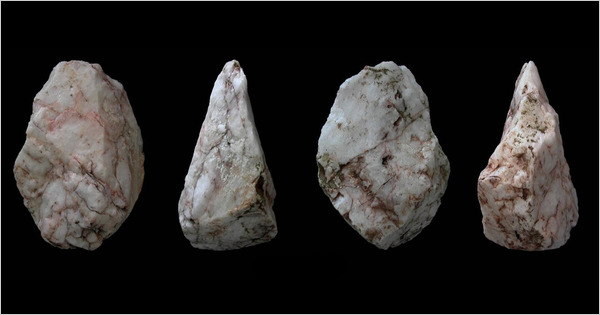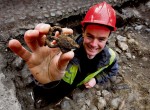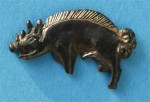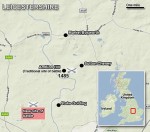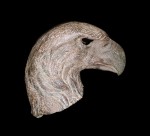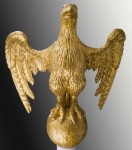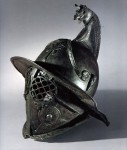A dramatic find of stone tools dating to at least 130,000 years ago on the island of Crete has revolutionized assumptions about how long humans have been navigating the seas.
Crete has been surrounded by sea for five million years or so, and no human species evolved independently on the island, so the tools found there have to have been wielded by people who got there by crossing the water.
Many researchers have hypothesized that the early humans of this time period were not capable of devising boats or navigating across open water. But the new discoveries hint that these human ancestors were capable of much more sophisticated behavior than their relatively simple stone tools would suggest.
“I was flabbergasted,” said Boston University archaeologist and stone-tool expert Curtis Runnels. “The idea of finding tools from this very early time period on Crete was about as believable as finding an iPod in King Tut’s tomb.”
Archaeologists went to Crete expecting to find stone tools from 11,000 years or so ago, but instead found stone axes hewn from local quartz that looked much like tools carved by our ancestors — possibly Homo heidelbergensis — in Africa and Europe 175,000 years ago.
They combed the island and found over 30 more of the hand axes, plus some other stone tools from the same time frame at 9 different locations on the coast. As time had moved what were once beaches up from the shore into what are now terraces, the tools moved with them.
Geologists date the earliest of these hand axe-having terraces to 130,000 years ago. The youngest is at least 45,000 years old.
The number, ages and locations of the tools suggest that these weren’t the remnants of the occasional lost-at-sea-clinging-to-a-log castaway. For people to get to Crete repeatedly over a hundred thousand years or so, they had to make a point of it.
Maps of the coastal shelves suggest that even when the Mediterranean reached its lowest known point, plummeting some 440 feet (144 meters) below current sea level, people leaving from Turkey or Greece would have had to make three separate water crossings ranging from 12 to 24 miles (19 to 39 kilometers) each to reach Crete. If, on the other hand, the seafarers departed from Africa, they would have voyaged over 125 miles (200 kilometers) of open water.
“The fact that we have several hundred stone tools in nine different locations suggests that a large enough number of people came in order to sustain the populations and leave a visible archaeological trace,” Runnels said. “That means they didn’t just raft over once.”
This assumes the artifacts are in fact hand axes and that they have been dated correctly, of course. Other archaeologists urge caution in accepting the new data until we have some confirmation, like for instance a Cretan site where the axes might have been produced and duplicated radiocarbon dating results.
